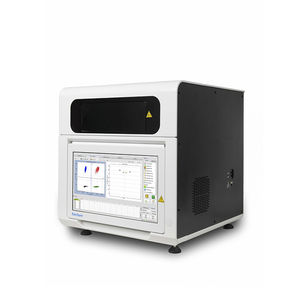
- Laboratory
- Sample management
- Automatic sample preparation system
- RainSure Scientific

- Products
- Catalogs
- News & Trends
- Exhibitions
Automatic sample preparation system for PCRbenchtopdroplets
Add to favorites
Compare this product
Characteristics
- Operation
- automatic
- Applications
- for PCR
- Configuration
- benchtop
- Preparation format
- droplets
- Throughput
8 p/h, 16 p/h, 32 p/h
Description
The principle of digital PCR is to partition a single nucleic acid template into separate reaction chambers and perform single molecule quantification through PCR amplification and fluorescence signal detection. Digital PCR technology does not rely on Ct values or standard calibration curves. Instead, it offers extremely high sensitivity, precision, and excellent repeatability. It is an absolute quantitative analysis technology that surpasses real-time PCR.
The DropX-2000 Droplet Digital PCR System puts this powerful technology in your hands, enabling the exploration of new realms of research at previously unattainable levels. The principle of digital PCR involves partitioning and Poisson distribution. DNA or RNA amplicons are divided into more than 20,000 droplets, with each droplet containing either 0 or 1 copy of the amplicon. Following PCR thermal cycling, droplets containing amplicons exhibit fluorescence, while those without copies show no fluorescence. The number of fluorescent droplets is then counted as either "0" or "1." The copy number (concentration) of the sample can be calculated using the number of fluorescent droplets through Poisson distribution. The DropX-2000 System utilizes advanced microfluidics technology to achieve sample partitioning, generating approximately 20,000 nanoliter-sized droplets per sample.
The DropX-2000 system is suitable for various applications, including tumor biomarker research, copy number variation analysis, viral pathogen detection, microbial detection, genetically modified organism detection, mRNA and miRNA detection,
*Prices are pre-tax. They exclude delivery charges and customs duties and do not include additional charges for installation or activation options. Prices are indicative only and may vary by country, with changes to the cost of raw materials and exchange rates.


